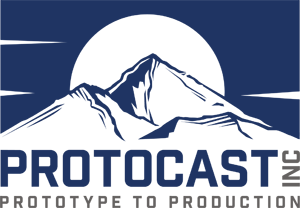
August 25, 2017 | Prototype Casting
Safety Tips for Metal Casting
You’ve heard it once and you’ll hear it again: “Safety first!” When it comes to just about anything, safety should always come first. As you can probably imagine, there are a great number of safety precautions to take into consideration when it comes to metal casting. After all, metal casting is an inherently dangerous activity that can result in serious injury and should be treated with good judgment and caution on the practitioner’s behalf. Prototype Casting is dedicated to making sure that we follow the necessary safety precautions to mitigate any possibility of harm.
Since safety is a major aspect of our work here at our Denver machine shop, we wanted to dedicate a post to some of the safety tips and best practices that the investment casting industry uses to ensure a high level of product quality as well as employee protection. Check out some of these useful safety tips from our investment casting foundry!
Protect Your Body
Wearing personal protective safety equipment is something that we can do to mitigate any possible danger before we even arrive at the machine shop. At the very least, personal protective clothing for metal casting workers includes clothing that covers ALL skin, made of naturally durable materials like leather, heavy wool, or heavy cotton.
If your protective clothing is not made of any of those natural materials, then the clothing should still be durable and purpose-built to stop molten liquids and other things from burning your skin. Machinists working with molten metals and metal casting should also not wear any kind of heavy wool or heavy cotton as these materials are flammable. Also, Class 1 metal-toed boots, a full face shield, and leather gauntlets are absolutely necessary.
Keep a Tidy Area
A good metal caster will also constantly maintain a tidy foundry area for a number of important reasons. One of these reasons is so that they don’t trip on anything on the ground (trip hazards are real!) and another reason concerns organization.
Making sure that the caster knows exactly where each and every tool makes it so that nothing gets lost, and if a tool needs to be used immediately or on a whim, then it’s right there. Also, the pouring area should always be free from all items that are not directly involved in the pouring process.
Weigh Down Flasks
A flask is a type of tooling that is used to contain a mold in metal casting. A flask only has sides on it, meaning that flasks have no top or bottom and form a frame around the mold. Flasks play an important role in a rapid prototyping operation, but flasks should also be weighed down or clamped because hydrostatic pressure of liquid metal can lift a lot of weight. Once the cope and drag have been separated due to pressure, the resulting uncontrolled flow of metal can be extremely hazardous and needs to be approached with the highest levels of caution.
Stay Tuned for More Safety Pointers
Prototyping Casting constantly aims to make sure that we’re strictly following the best safety practices in the metal casting, rapid investment casting, and machine shop industries.
We pride ourselves in providing you with detailed, accurate and high-quality prototypes for you to base your production on, but we know that this industry is inherently dangerous and should always be approached with safety as a top priority.
If you have any questions about our standard safety measures or want to learn more about the services we provide, get in touch with our rapid prototyping company today!


